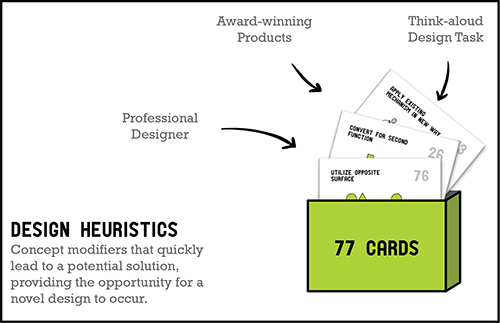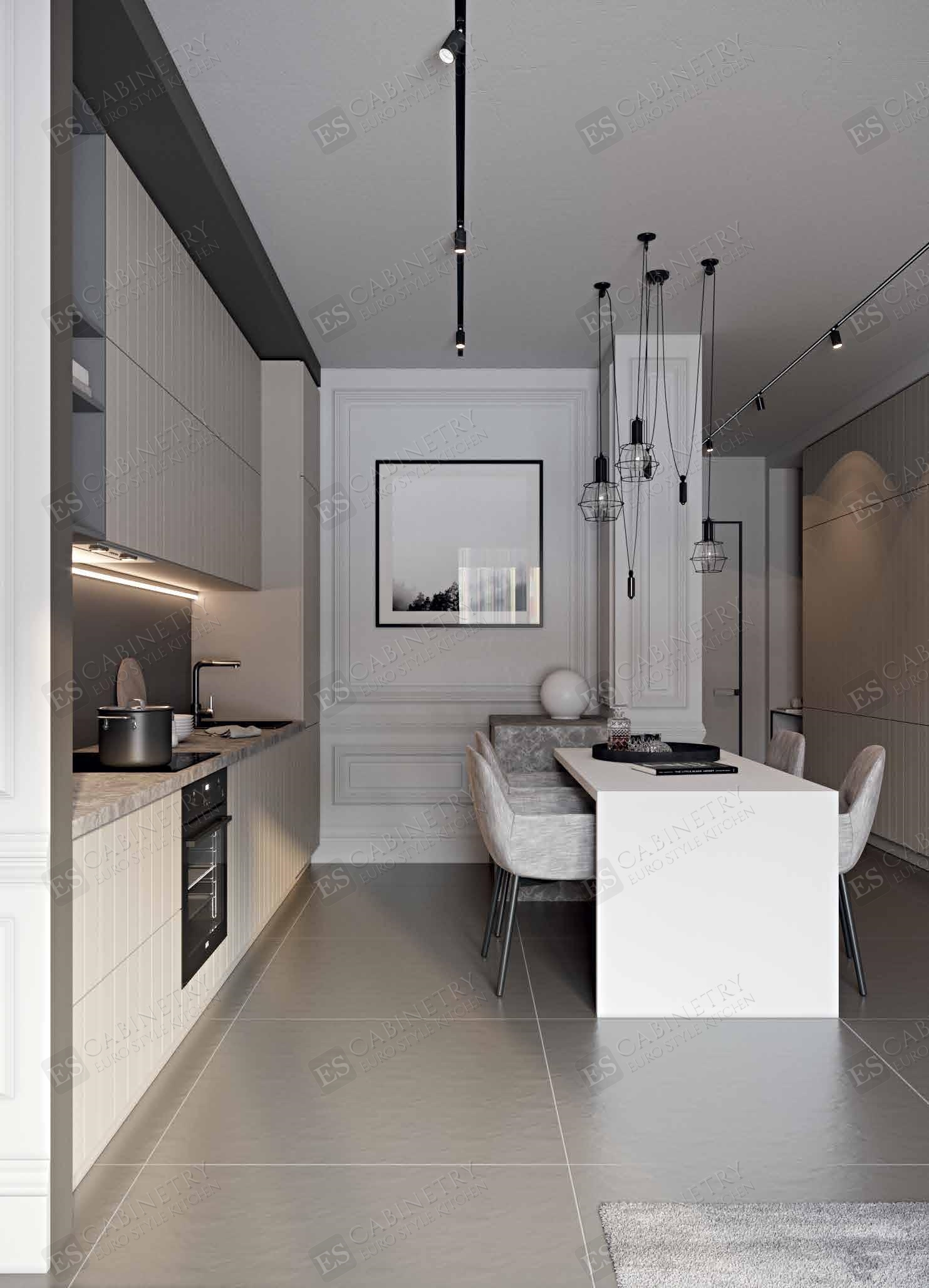Table Of Content
- References
- Facts About Software Engineering
- Design Patterns for Mobile Augmented Reality User Interfaces - An Incremental Review
- Mobile Usability Research – The Important Differences from the Desktop
- Elderly-centered usability heuristics for augmented reality design and development
- List of Usability Heuristics
- Heuristic Evaluation (HE)

The findings from this study can be implemented in design practice and education. The results provide a collection of useful design strategies that can be used by practitioners, educators, and students to facilitate idea generation. Future research will continue to identify how design heuristics are used by both practitioners and students to enhance creativity across design and engineering disciplines, and test their efficacy in classroom and professional settings. From the present results, it is clear that designers in both industrial design and engineering fields make use of design heuristics frequently, and that their use results in more creative concepts. Exposure to a variety of heuristics, and experience in applying them on many different problems, may lead to the development of expertise in design in both disciplines.
References

Recall is the process of remembering where you left off, who you spoke to last, how to go about this or that process. Recognition is the process of picking up cues that allow you to move forward in appropriate ways. Recognition is far and away the easier option because your brain can work in the moment rather than digging through memory to find your solution. It’s usually a good idea to go beyond simply adding a spinning wheel or a slow-loading progress bar (on their own, these can actually make the waiting worse).

Facts About Software Engineering
Machine learning at the service of meta-heuristics for solving combinatorial optimization problems: A state-of-the-art - ScienceDirect.com
Machine learning at the service of meta-heuristics for solving combinatorial optimization problems: A state-of-the-art.
Posted: Sun, 16 Jan 2022 08:00:00 GMT [source]
The ten principles of this method help designers in conducting thorough UX research during the design phase and once the interactive prototypes have been created. With a list of clear patterns to look at in any design, UX design teams can efficiently analyze a design, saving time and resources. These can also allow teams to focus on the specific usability issues, without going into an extended dialogue about every single design choice. As technology continues to evolve, the role of design principles and usability heuristics will become increasingly important in shaping the user experience.
Design Patterns for Mobile Augmented Reality User Interfaces - An Incremental Review
In other words, people presume how the system could work based on their experience with other systems that are similar. By using language that they are familiar with, you can help users overcome the initial awkwardness. Think about the last time you encountered an error message that was some string of language that made absolutely no sense to you, with nothing but an “OK” button to click on.
Mobile Usability Research – The Important Differences from the Desktop
While you probably don’t want to let your users in on every aspect of what’s going on behind the scenes, identify where the process is at and how much longer it will be—with as much specificity as possible. These error messages should also be presented with visual treatments that will help users notice and recognize them. Shortcuts — hidden from novice users — may speed up the interaction for the expert user so that the design can cater to both inexperienced and experienced users.
In addition, learning to use TRIZ requires substantial effort and commitment (Ilevbare et al.Reference Ilevbare, Probert and Phaal2013). However, our work has not directly compared whether there are differences in how both groups use design heuristics as a natural cognitive strategy. In sum, heuristics were identified 659 times in the 24 individual protocols.
Literature on Heuristic Evaluation (HE)
Importantly, cognitive heuristics are not guaranteed to produce a successful solution, but can help to quickly identify possible solutions. All digital products are accessed through a myriad of platforms such as desktop machines, tablets, mobile phones, kiosks etc. Examine the aspects such as seamless experience, adaptation, and optimization of design systems across the different channels.
When the users are interacting with your digital product, they can perform the tasks faster using shortcuts. Your interface should aid this experience, instead of slowing the users down. It is important for the design of a product or service to be consistent, both in an internal and external manner.
Heuristic Evaluation (HE)
Design Heuristics are a set of empirically-derived "rules of thumb" that designers can use to generate more creative ideas. The Design Heuristics tool consists of a deck of 77 cards, each presenting a different rule of thumb for the designer to consider. Help and documentation content should be easy to search and focused on the user’s task.
But even if technology is a mystery to you and you’ve never used a keyboard shortcut in your life, flexibility and efficiency of use is a critical measure of usability. If you’ve been on this particular journey with the same website before, the process relies heavily on your memory of how you finally figured it out last time. The fastest way to accomplish this is by adhering to the ways most other products accomplish common tasks.
Designers naturally generate ideas also without tools (Purcell & Gero Reference Purcell and Gero1996); these natural approaches are developed based on designers’ experiences and preferences for problem solving (Kirton Reference Kirton2004). However, it can be difficult for designers to describe their own cognitive thought processes (Daly et al.Reference Daly, Yilmaz, Seifert and Gonzalez2010), which may occur largely unconsciously (Nisbett & Wilson Reference Nisbett and Wilson1977). For this reason, think-aloud protocols (Ericsson & Simon Reference Ericsson and Simon1993) are used to study designers as they speak their thoughts while working through a design problem. Protocols have been shown to be effective in understanding designers’ thoughts without interfering with their natural thinking processes (Atman & Bursic Reference Atman and Bursic1998). Make a note of all subjective perceptions and study the brand’s adherence to its visual collaterals, application of typography, sense of cohesiveness, and overall styling of the design system. Read through the list of aspects used to evaluate the product in terms of aesthetics.
For example, if the users open a web page and there is a lot going on there, they will jump away from it without spending much time. Therefore, it is important to focus on the needs of the users and to create useful, aesthetically pleasing designs. Usability heuristics are the standards set to evaluate the design of a product or service. These heuristics provide an efficient and standardized way to test the usefulness of a design, identify the issues, and recommend appropriate solutions. Your digital products need to work in ways that are congruent with users’ other, dominant ways of understanding the world.
What follows is a simple explanation of the usability heuristics, along with their significance for designers. These principles can be thought of as a usability heuristics checklist that can improve designs of physical as well as digital products. When it comes to a user interface, evaluation is a critical part of the design process. It is there that designers get a better understanding of the issues and the frustrations of users that can then be resolved iteratively. Heuristic evaluation is a process that can help in identifying the issues strategically. These standards have been created after years of research, combining the knowledge gained from various design projects.
Both design principles and usability heuristics are critical in creating a positive user experience, as they ensure that the product is intuitive, efficient, and enjoyable to use. Design Principles provide a framework for designers to make design decisions and prioritize design elements based on the desired user experience. For example, the principle of “simplicity” emphasizes the importance of reducing clutter and minimizing distractions to make the product easier to use. Another example is the principle of “consistency,” which ensures that the product’s design elements, such as buttons, icons, and navigation, are consistent throughout the product to reduce confusion and enhance usability. Incorporating Design Principles into the design process helps ensure that the product meets the needs and expectations of the target user and delivers a positive user experience.
For instance, ergonomics and judicious use of screen real estate are heuristics specific to mobile devices. Several researchers and leaders have proposed different sets of guidelines for user interface design. Let’s look at one of the most popular guidelines proposed by Jakob Nielsen and Rolf Molich. As developers embrace design heuristics and adapt them for future challenges, they lay the foundation for innovative and robust software systems that shape our digital future. This brief task occurred in a one-time session due to the practical limitations involved in sampling expert designers across fields. This was not intended to reflect a typical assignment for designers, who typically consider a problem over a much longer period of time, and often work as part of a design team.

No comments:
Post a Comment